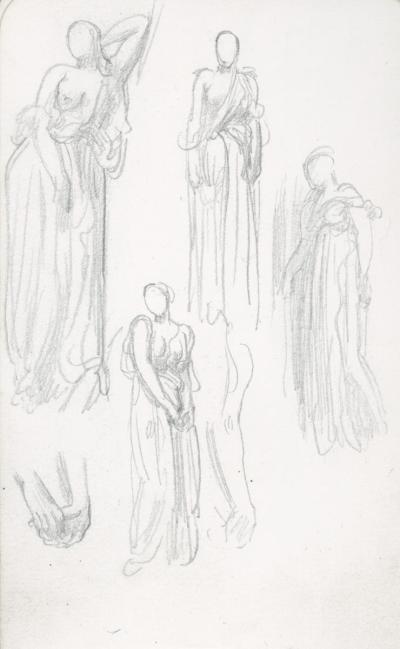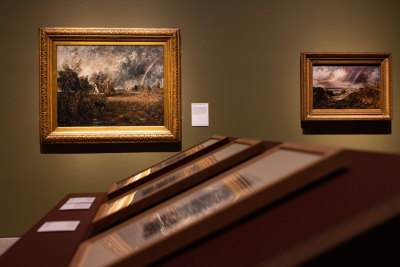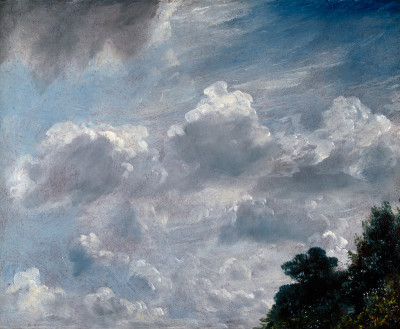Object of the month: August 2016
Object of the month: August 2016
Frederic Lord Leighton's sketchbooks
By The RA Collections Team
Published 1 August 2016
Draughtsmanship was an essential part of Lord Leighton PRA’s artistic practice and he placed great value on his drawings.
-
The rich and varied nature of his continental training abroad in the art ateliers and academies of Italy, Germany and France, instilled in Lord Leighton an exacting and rigorous process of forming a picture.
Beginning with an initial conception, Leighton would follow with several sketches and worked-up studies, finishing with the final design. While other artists viewed drawing solely as a preparatory practice, Leighton placed great value on his drawings and even after completing a painting, would display them in his studio. He considered his sketchbooks the most important records he owned.
The RA Collection houses over 40 sketchbooks owned and used by Leighton throughout his career, dating from the early 1850s when he first began exhibiting at the Summer Exhibition, up until the 1890s, when he was one of the most distinguished and successful artists of the Victorian period and President of the Royal Academy.
-

Lord Leighton PRA, Standing female figure viewed from the back, 1870s or early 1880s.

Lord Leighton PRA, Sketches of standing female figures, Probably early 1870s.

Lord Leighton PRA, Four sketches of a woman undressing, 1870s or early 1880s.
-
From the 1860s, Leighton’s art focused on subjects drawn from Ancient Greek mythology. In a letter of 1873 to the art critic Joseph Comyns Carr, Leighton described the development towards classicism in his art as a result of the superior aesthetic potential of classical subjects, and in particular, of drapery:
“By degrees, however, my growing love for Form made me intolerant of the restraint and exigencies of costume, and led me… finally, to a class of subjects, or, more accurately to a set of conditions, in which supreme scope is left to pure artistic qualities, in which no form is imposed upon the artist by the tailor, but in which every form is made obedient to the conception of the design he has in hand. These conditions classic subjects afford, and as vehicles, therefore, of abstract form, which is a thing not of one time but of all time, these subjects can never be obsolete, and though to many they are a dead letter, they can never be an anachronism..”
One sketchbook in particular contains many preparatory studies for important paintings Leighton produced during the 1870s and 1880s at the height of his “Hellenic” period, including Clytemnestra (c. 1874), The Daphnephoria (1876), Iostephane (1880), Phryne (c. 1882) and the Music’ and *Dance friezes (c. 1881-3 and 1883-5). The dominant theme of all these drawings is a standing female figure in classical dress. The sketches of women undressing show Leighton’s interest in observing exactly how fabric reveals and conceals the body while in motion.
Single figure sketches place greater emphasis on the detail of folds and pleats formed by fabric as it is pulled and wrapped around the body; here the model is shown stepping forward, creating a contropposto, or counterpose, form by shifting her weight onto her front foot, while pulling up the fabric of her robe to emphasise the sweeping, curving lines of drapery across her back (Standing female figure viewed from the back; pictured). Other pages of this sketchbook show Leighton testing out different poses and stances of figures, with much more statuesque, columnar drapery depicted. For Leighton, classical dress expressed a higher form of beauty that could not be achieved by modern costume, and furthermore, was ideal in the way in which it both concealed and revealed the form of the body beneath.
A selection of Leighton’s sketchbooks are currently on display in Flowing Lines of Grace: Drawing Drapery in the Late Nineteenth Century, 26 July – 7 October.
The artist of the month for August 2016 is (John Bellany RA)[/artist-of-the-month-august-2016-john-bellany-ra].






